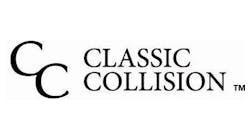For many shops, the paint department can be a money pit and a hurdle to efficiency, says Jim Compton. It’s also an area in which a strong level of influence can be exerted and sometimes small changes can have a large impact. Prior to becoming owner and general manager of J. Hunter & Associates, an independent provider of auto body paint and materials management, Jim Compton spent several years working for large jobbers. Throughout his career, he’s helped countless shops to better control their paint departments and open common bottlenecks.
Here, he describes the top five paint booth bottlenecks he encounters with MSO shops and how to solve them.
1) Too much down time in the booth.
Compton notes that the paint booth is among a shop's largest investments. That means no down time or waiting for the next vehicle time.
“If you spent the amount of money you spent on a spray booth on an employee, you would expect that employee to be working,” he says.
Compton recommends always having the next vehicle (or two or three) ready or close to ready and staged to be painted by either end of day, Friday or before lunch. In addition, all color matching and spray outs should be completed before the vehicle enters the booth. He says that down time is by far the greatest cause of spray booth bottlenecks and resolving this bottleneck often saves shops from unnecessarily purchasing another spray booth.
“Several times I have spoken to a shop that was planning on a second booth only to find that the first vehicle often wasn’t sprayed until 9 or 10 in the morning,” Compton says. “No one would want an employee that did nothing for the first two hours of the day.”
To figure out if your shop is using your booth effectively, he recommends adding up the total ROs at the end of the month and dividing it by the number of days and the number of spray booths. For example, if you have 22 working days a month and 220 cars in one booth, you would have 10 cars per booth per day.
“Although every day is not going to be 100 percent efficient, overall, you want to make sure your booth is effective as much of the time as you can,” he says. “If you’re open for business from 8–5, by my math that’s an nine hours day. You should be able to get eight or nine out of there. Realistically, you’re probably going to get seven to eight booth cycles a day out. That’s a reasonable goal for a high production facility for booth cycles.”
2) Letting a bad day carry over into the next.
A crazy day is bound to happen and mistakes are inevitable, says Compton. But the key to getting over those crazy days is not letting the bottleneck of Monday become the bottleneck of Tuesday. He says it’s one of the most common paint department issues he sees with MSOs and it’s one that doesn’t take too much effort to fix.
“I would say with MSOs that they get caught up with a bad Tuesday and let it carry over into Wednesday,” he says. “Instead of at the end of the day saying, ‘It didn’t come out great but let’s set ourselves up for better success tomorrow by having the two next vehicles ready.’”
Vehicles need to be staged (in the booth or waiting just outside) at the end of every day/shift so the first vehicle can start to be painted by starting time, he says. The final efforts in the paint department every day need to be setting up the first few vehicles for the next day. This includes the painter making sure all needed parts are present, that the prep is complete and passes quality assurance and final verification of color match and/or spray-out panel. And beyond that, the vehicle should not only be prepped, but also masked with the color mixed and matched. Compton says that this could take as little time as 15 or 30 minutes, but will make a big difference in efficiency the rest of the week.
“You can’t let the backlog or delays of one day roll into the next. If you have a problem or delay fix it now don’t carry it over into the next day,” Compton says. “Your staff will also benefit from a clean fresh start each day/shift.”
3) Taking lunch when the booth is idle.
A great time to take a break, Compton says, is while the booth is baking—not while it’s idle. The problem is that shops with an orderly personnel management system may mandate a break at certain times, which makes it easier on management to keep track of employees. The problem?
“It’s doesn’t take into account that the booth doesn’t know what time it is,” Compton says. “If you’re averaging 8 or 9 cars a day, you’re working that booth hard and you have to put every management practice in place.”
Altering the lunch or bake schedule could help the shop get one more car in per day.
4) Letting dirty personnel into the booth.
Only clean staff should enter the paint booth, says Compton, yet all too often he sees staff enter who are covered in sanding dust. The reason, he says, is that managers in shops commonly do walk-throughs to check on the departments and will walk into the booth, not realizing that they are potentially contaminating the clean environment.
“If you treat the spray booth as you would an operating room, where you do everything you can to keep all the dirt out of there, why would you let dirty people come in there?” he says.
That means no walk-throughs by managers or writers unless they are also prepped. Furthermore, the booth should also be cleaned and swept several time a day (avoid using blowers) to ensure the cleanliness of the booth.
5) Turning the booth on at starting time.
In some climates or seasons, the booth may need to be warmed up before the start of the day or shift, Compton says.
“In the dead of the winter, there are a lot of shops where it’s cold. For paints to work properly, they need to be at a certain temperature and the vehicle surface temp needs to be up. If you have a cold shop and the surface temperature of the vehicle is 73, when you start spraying, you can have as much as a 10-degree drop,” he says. “That can change the drying efficiency of virtually every coating out there because every coating needs to be sprayed at 70 degrees plus. You’re going to slow down dry, flash and cure.”
Paint manufacturing guidelines in drying, baking and cure times and temperatures must be followed to avoid quality issues, Compton notes. To avoid problems, assign this task as needed to someone who is in early so that painting can begin exactly at starting time.



